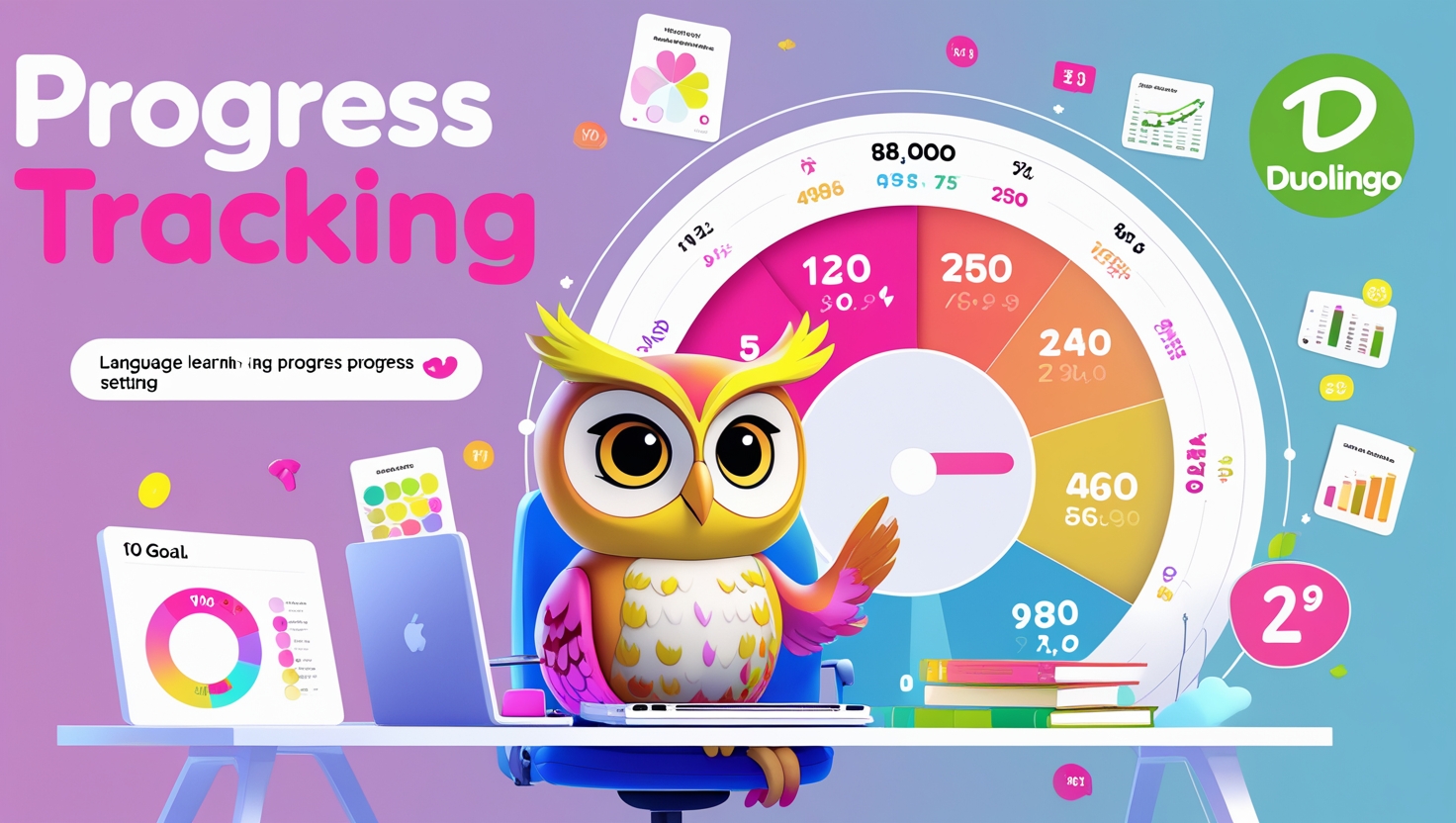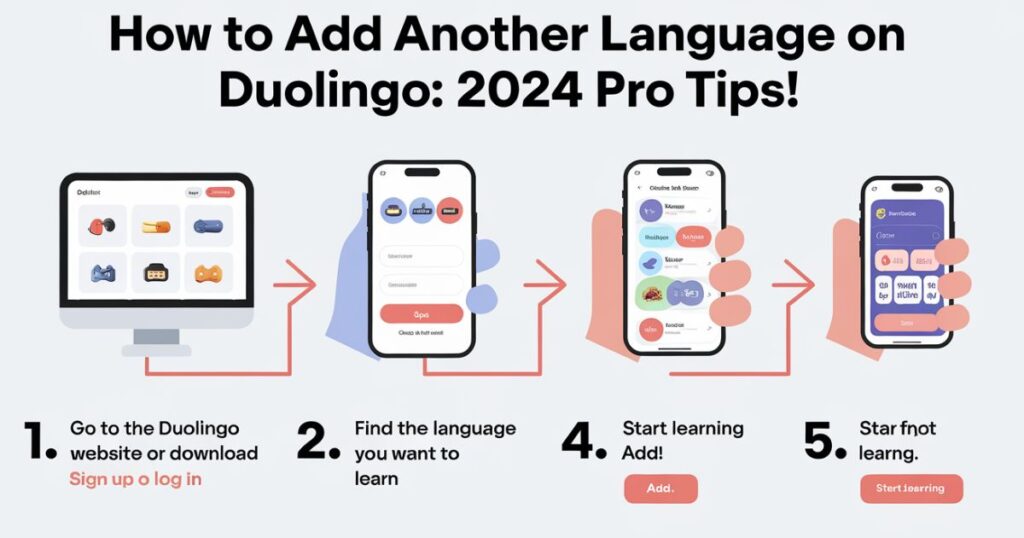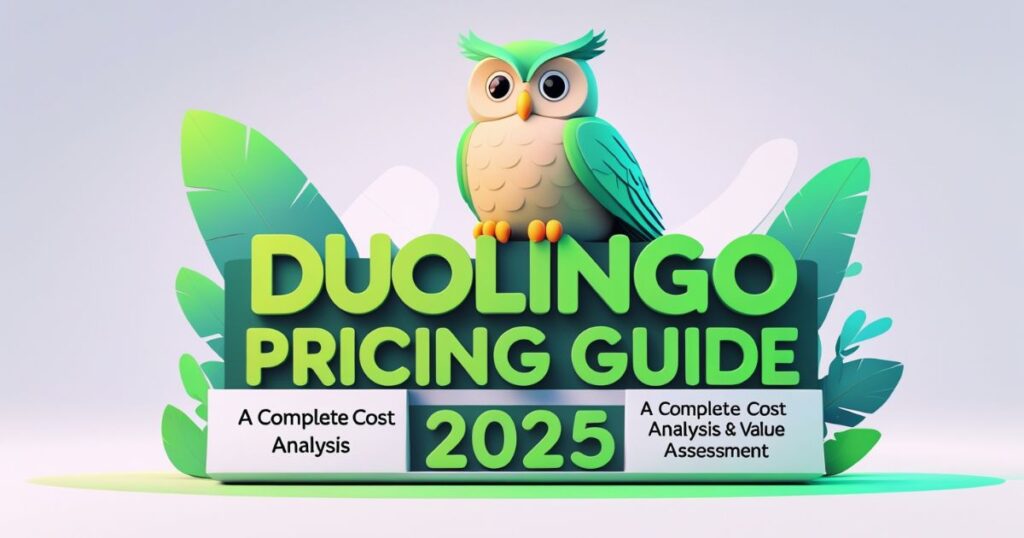Every language learner faces the ultimate challenge: bridging the gap between classroom knowledge and real-world fluency. Duolingo Timed Practice has emerged as a powerful tool in this journey, offering a unique blend of pressure and precision that mirrors real-world language situations.
Understanding the Power of Timed Practice
Timed Practice in Duolingo accelerates language acquisition through strategic pressure. The system simulates real conversations by using Lightning Round and XP Ramp Up Challenge features, forcing quick thinking and natural responses. This creates stronger neural pathways for faster language processing, mimicking real-world speaking scenarios.
How the System Works
Master Duolingo Practice Hub offers several timed challenge formats:
- Lightning Round: 90-second intense practice sessions
- Match Madness: Quick-fire matching exercises
- Rapid Review: Focused review of previously learned material
- XP Ramp Up Challenge: Progressive difficulty increases
Each format serves a specific purpose in your language learning journey. The varying time constraints and exercise types create a comprehensive training environment that builds different aspects of language competency.
Strategic Preparation for Success

Mobile learning and practice sessions require solid groundwork. Focus on mastering core vocabulary building, technical setup, and mental preparation. Establish strong typing speed, configure device settings, and develop a consistent time allocation system for optimal results.
Essential Preparation Steps
Master core vocabulary building through systematic practice. Configure devices for optimal typing drills and ensure stable connectivity for seamless language acquisition.
- Vocabulary Building
- Master core vocabulary in your target language
- Practice word recognition without translation
- Create mental associations for faster recall
- Technical Preparation
- Configure your device for optimal performance
- Learn keyboard shortcuts for faster input
- Ensure stable internet connection
- Mental Preparation
- Set realistic goals for each session
- Practice deep breathing techniques
- Choose optimal practice times
Device Optimization Table
| Device Type | Optimization Tips | Expected Benefits |
| Mobile | Enable auto-correct, use swipe typing | Faster input speed |
| Tablet | Use external keyboard, maximize screen brightness | Better visibility and typing accuracy |
| Desktop | Set up keyboard shortcuts, use full-screen mode | Enhanced focus and response time |
Advanced Techniques for Maximum Efficiency
Enhance your language proficiency through strategic gamified lessons. Utilize skill-specific training methods while focusing on pattern recognition. Implement quick word recognition techniques for improved performance in timed practice.
Pattern Recognition and Quick Response
Develop strategic real-time feedback analysis for question patterns. Master personalized content recommendations through systematic practice of recurring structures.
Speed-Enhancement Strategies
To enhance speed, focus on word bank efficiency by scanning for long words first, grouping similar words, and using elimination strategies. Boost typing speed by practicing common phrases, learning keyboard layouts, and using predictive text. Master Duolingo audio exercises by training your ear, recognizing numbers, and focusing on sentence rhythm.
Progress Tracking and Goal Setting

Monitor your language skills through comprehensive progress tracking. Set achievable goals using XP points and maintain consistent practice hub engagement. Focus on measurable improvements in activity history.
Key Metrics to Track
Monitor XP Ramp Up Challenge completion times and accuracy. Track Lightning Round performance and maintain consistent Match Madness improvement records.
Setting SMART Goals
Setting SMART goals helps you achieve success by focusing on clear, actionable objectives. SMART stands for Specific, Measurable, Achievable, Relevant, and Time-bound, ensuring your goals are realistic and effective.
| Goal Type | Example | Timeframe |
| Speed | Complete Lightning Rounds in 75 seconds | 2 weeks |
| Accuracy | Achieve 95% accuracy in Match Madness | 1 month |
| Consistency | Complete 5 timed sessions weekly | Ongoing |
| XP | Earn 1000 XP through timed practice | Weekly |
Specialized Techniques for Different Exercise Types
Mastering various exercise types in Duolingo timed practice requires developing tailored strategies for success. Focused practice on Read and Select, Fill in the Blanks, and Listen and Type enhances your comprehension, grammar proficiency, and typing accuracy, enabling you to handle diverse question formats effectively and improve overall language learning performance.
Read and Select
Quickly scan the answers to identify keywords that align with the question. Use the process of elimination to discard incorrect options, ensuring precise and efficient completion of this type of question.
Fill in the Blanks
Carefully read the sentence to grasp its context. Focus on grammar patterns and contextual clues to deduce the missing words, improving both accuracy and comprehension during the exercise.
Listen and Type
Pay attention to sentence structures, article usage, and common word pairs while listening. Regular practice sharpens your ability to pick up on language nuances and improves overall listening and typing skills.
Real-World Application
The ultimate goal of timed practice is to enhance your real-world language abilities, ensuring you can use your skills effectively in practical situations. By focusing on communication, listening, and writing, you bridge the gap between practice and real-life application while building confidence and fluency in your target language.
Practical Application Strategies
Enhance language skills with practical strategies like conversation practice, using learned phrases, responding quickly, and joining language exchange groups. Improve comprehension by watching movies without subtitles, listening to target language podcasts, and reading news articles with time limits. Boost writing by setting time limits, practicing quick email responses, and using social media actively.
Maintaining Motivation and Progress
Sustaining long-term progress requires a balanced approach to practice sessions. Here’s how to maintain momentum:
Engagement Strategies
- Set daily XP Points goals
- Participate in community challenges
- Track streak milestones
- Celebrate small victories
Balance Tips
- Alternate between timed and untimed practice
- Mix different exercise types
- Take strategic breaks
- Adjust difficulty progressively
Maximizing Weekend and Weekday Practice

Optimize your practice schedule based on your daily routine:
Weekday Strategy
- Short, focused sessions during breaks
- Morning practice for better retention
- Evening review sessions
Weekend Strategy
- Longer, intensive practice sessions
- Experiment with new exercise types
- Focus on weak areas
- Community engagement
Leveraging Technology for Master Duolingo
The integration of mobile learning with timed practice creates powerful opportunities for language mastery. Understanding how to leverage these technological advantages can significantly boost your learning efficiency.
Smart Device Integration
Enhance language learning with seamless device integration. Use mobile app optimization by enabling push notifications, downloading offline lessons, and customizing audio settings. Leverage haptic feedback for engagement.
Ensure cross-platform syncing to track progress, maintain schedules, and access personalized recommendations. Sync your activity history effortlessly for a streamlined learning experience across devices.
Industry Leaders
“Duolingo’s timed practice feature represents the future of adaptive learning. It’s not just about language acquisition—it’s about building neural pathways that mirror real-world conversation patterns.”
- Dr. Sarah Chen, PhD Director of Cognitive Science, Stanford University
“In my 20 years of studying language acquisition, I’ve never seen a more effective tool for rapid vocabulary retention. The gamification elements in Duolingo’s timed practice create the perfect balance of pressure and engagement.”
- Professor Michael Torres Head of Linguistics, MIT
Advanced Practice Techniques
Enhance your skills with tailored techniques that cater to your current proficiency level. By leveraging personalized learning paths, engaging in deliberate practice, and using adaptive tools, you can achieve measurable growth. From foundational exercises to mastery-level challenges, these strategies ensure continuous improvement through focused effort and targeted refinement.
Beginner Level Strategies
When starting out, focus on building confidence with basic vocabulary, mastering common phrases for everyday communication, developing quick recognition skills for simple terms, and understanding basic grammar patterns to form coherent sentences effortlessly. Practice consistently to establish a strong foundation.
Intermediate Level Approaches
At this stage, emphasize complex sentence construction to enhance fluency, learn idiomatic expressions for natural communication, achieve advanced grammar proficiency to reduce errors, and diversify your vocabulary by focusing on varied word usage for different contexts.
Advanced Level Techniques
For advanced learners, prioritize native-speed comprehension for real-world interactions, understand cultural nuances to connect deeply, expand into professional vocabulary for career goals, and master complex grammar structures to articulate sophisticated ideas with precision and confidence.
Maximizing XP and Achievement Systems
Understanding the XP rewards system can motivate consistent practice:
| Activity Type | XP Range | Time Investment |
| Lightning Round | 20-40 XP | 90 seconds |
| Match Madness | 15-30 XP | 60 seconds |
| Rapid Review | 25-45 XP | 2 minutes |
| XP Ramp Up | 40-80 XP | 15 minutes |
Achievement Strategy
Maximize success by leveraging daily bonus points through consistent effort. Participate actively in weekend challenges and special events to boost rewards. Prioritize streak maintenance for long-term benefits. Stay disciplined, track progress, and adapt strategies to optimize results. Consistency and engagement are key to achieving your goals effectively.
Community Engagement and Social Learning

Community engagement and social learning are essential for successful language acquisition. Motivation is boosted through active participation in language clubs, leaderboards, and sharing achievements.
Engaging in friendly competition fosters progress. Collaborative learning through study groups, exchanging strategies, and providing peer support enhances the overall learning experience.
Time Management and Practice Scheduling
In Master Duolingo properly managing your time and organizing practice schedules ensures consistent progress in language learning. Implementing an effective time allocation system helps you balance listening, speaking, reading, and writing efficiently to reach your goals.
Sample Daily Schedule
Design a structured daily plan incorporating focused learning sessions, active practice, and regular breaks. Divide your time between language skills, such as Vocabulary Review, Lightning Round, XP Ramp Up, and Gentle Review, for maximum results.
| Time | Activity | Duration |
| Morning | Vocabulary Review | 10 mins |
| Lunch Break | Lightning Round | 5 mins |
| Evening | XP Ramp Up | 15 mins |
| Before Bed | Gentle Review | 10 mins |
Measuring Long-Term Progress
Tracking long-term progress is vital for achieving language proficiency goals. Use structured tools and methods to assess growth, identify strengths, and address weaknesses over time. Focus on areas like performance monitoring, skill assessment, and comprehension evaluation to ensure consistent improvement and measurable results in your language-learning journey.
Progress Monitoring Tools
Leverage tools to track weekly performance, analyze error frequency, and measure speed improvements in language tasks. Use comprehension assessments to identify gaps and monitor progress effectively. Regular tracking provides insight into learning trends and helps refine your study approach.
Skill Assessment
Conduct regular level tests to evaluate your proficiency. Focus on improving speaking confidence, measuring writing accuracy, and performing listening comprehension checks. These targeted assessments help identify key skill gaps and guide focused practice for continuous improvement.
Master Duolingo Professionals
“In my classroom, I’ve integrated Duolingo’s timed practice as a core component of language instruction. The results have been remarkable—students are more engaged and show measurably better retention.”
- Lisa Thompson Head of Modern Languages, International School of Geneva
Future-Proofing Your Language Skills

Stay ahead by building resilient language skills that evolve with your goals. Focus on strategies like sustainable practice habits and advanced integration techniques, ensuring continuous growth through adaptive learning and real-world application.
Sustainable Practice Habits
Master Duolingo establish daily routines to maintain consistency and set progressive challenges for steady improvement. Prioritize learning momentum, adapting strategies to meet your evolving needs while keeping your language practice engaging and effective.
Advanced Integration
Master Duolingo enhance your skills by blending Duolingo practice with native content consumption, language exchange programs, and cultural immersion activities. Incorporate professional language use for career development and deeper understanding of real-world applications.
Tips for Special Circumstance
Master language skills with these practical tips tailored for special circumstances. Whether preparing for travel or enhancing professional development, these strategies focus on relevant vocabulary, real-life practice, and cultural understanding.
Travel Preparation
- Focus on relevant vocabulary
- Practice travel-specific phrases
- Master numbers and directions
- Learn cultural expressions
Professional Development
- Industry-specific terminology
- Formal communication practice
- Business vocabulary focus
- Professional etiquette
Frequently Asked Question
How many hours of Duolingo is equal to a college course?
According to Duolingo’s research, completing a language tree on Duolingo is roughly equivalent to 4-5 semesters of university language courses. However, this comparison isn’t exact since Duolingo focuses more on vocabulary and basic grammar rather than the comprehensive language education you’d get in college.
What does level 25 mean in Duolingo?
Level 25 was the maximum level achievable in Duolingo’s old system. However, Duolingo has since moved to a different system using crowns and legendary levels. The old level system is no longer relevant to current Duolingo users.
Can you finish Duolingo in 3 months?
While it’s technically possible to complete a Duolingo course in 3 months with intense daily study (2-3 hours per day), it’s not recommended. Language learning is more effective when spread out over time to allow for proper retention and practice.
What is the disadvantage of Duolingo?
Key disadvantages include:
- Limited speaking practice and pronunciation feedback
- Lack of cultural context and real-world conversation skills
- Sometimes unnatural or impractical example sentences
- Focus on translation rather than immersion
- Minimal explanation of grammar rules
- Limited writing practice
How long does it take to master a language on Duolingo?
You can’t truly “master” a language on Duolingo alone. The app typically takes 6-12 months to complete a course with regular practice, but this will only get you to an intermediate level (approximately B1 on the CEFR scale). True language mastery requires additional resources and real-world practice.
What is the highest Duolingo unit?
Duolingo courses are now organized into units from 1 to 10, with Unit 10 being the highest. Each unit contains multiple lessons and skills that must be completed to progress.
Is Rosetta Stone better than Duolingo?
Neither is definitively “better” – they serve different purposes:
- Duolingo is free, more game-like, and better for casual learners
- Rosetta Stone is more structured, immersive, and better for serious learners
- Rosetta Stone has better pronunciation tools
- Duolingo offers more frequent updates and social features
Conclusion
Timed Practice on Duolingo offers a structured path to language fluency, but success requires strategic approach and consistent effort. By implementing these techniques and maintaining a balanced practice routine, you can significantly accelerate your language acquisition journey.
Remember: The key to success lies not in perfect performance but in consistent, mindful practice. Start implementing these strategies today, and watch your language skills soar to new heights.
Visit For More Blog’s: duolingoabout.com

Welcome to DuolingoAbout.com! Your go-to hub for expert tips, tricks, and guides to mastering Duolingo. Simplify your language-learning journey with curated content designed for learners at all levels.






